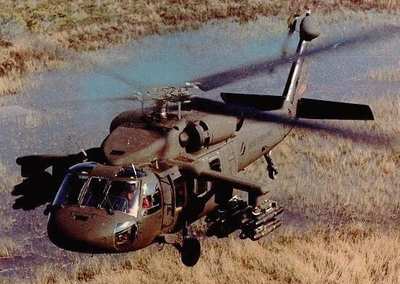Gentrifying the Hood
The U.S. Army’s 12th Aviation Battalion enjoys the distinction of being the first Army Aviation Battalion to be equipped with the patented Instrument Conditions Awareness Recognition and Understanding System (ICARUS)—a forward-thinking view-limiting device that replaces the traditional IFR training hood and affords instructor pilots the ability to challenge students with simulated Instrument Meteorological Conditions (IMC) that rival those of Level-D flight-simulators.

View limiting devices (VLD) are utilized by Certified Flight Instructors/Instrument (CFIIs) to train student pilots in the high art of competently controlling and navigating aircraft solely by reference to flight-instruments under Instrument Meteorological Conditions (IMC)—such as those occasioned by clouds, fog, haze, heavy rain, blowing snow, and dust.
By virtue of its ability to rapidly change opacity, the ICARUS smart VLD allows flight-instructors to alter student pilots’ in-flight visibility, thereby creating dynamic, scenario-based flight-training environments. The ICARUS device's polymer dispersed liquid-crystal visor cutout is controlled by an App or manually via a power control unit manipulated by the flight-instructor. The device can be tailored to any airframe and weighs a scant 2.5-ounces.
Developed in 2014 and patented in 2016, the ICARUS device is currently utilized by numerous civilian flight-schools, law-enforcement agencies, and Part 135 air-taxi and air-ambulance operators. Whether applied to primary IFR training or initial or recurrent professional pilot training events, the ICARUS device is eminently effective and conducive to use in aircraft as disparate as Cessna’s 172 Skyhawk, Boeing’s CH-47 Chinook, and Gulfstream’s G-650.
The ICARUS device will support the 12th Aviation Battalion’s aircrew training regimen by enabling Instructor Pilots and Unit Trainers to safely simulate Degraded Visual Environments (DVE) in the Battalion’s UH and VH-60 Blackhawk helicopters.

By accurately simulating rapid reduction of flight visibility and evoking the bewilderment of forced transition to instrument flight, the ICARUS device stands to better prepare Army Aviators for encounters with Inadvertent Instrument Meteorological Conditions (IIMC). Furthermore, by dint of the accuracy with which the ICARUS device mimics real-world meteorological conditions, Army Aviators can safely practice zero/zero instrument approaches and departures. Finally, the ICARUS device’s ability to replicate marginal visibility conditions will aid in the sharpening of Army Aviators’ critical IFR decision-making skills.
At a per-unit cost of $1,250, the ICARUS device is within the fiscal purview of even small flight-schools. What’s more, the system’s superiority to conventional IFR training hoods—those gray horrors universally despised by green student-pilots and salty ATPs alike—is apt to engender interest and enthusiasm amongst both instrument students and CFIIs, and in so doing, drive up flying hours, training quality, check-ride performance, and bottom-line.
 ANN's Daily Aero-Linx (05.02.24)
ANN's Daily Aero-Linx (05.02.24) ANN's Daily Aero-Term (05.02.24): Touchdown Zone Lighting
ANN's Daily Aero-Term (05.02.24): Touchdown Zone Lighting Aero-News: Quote of the Day (05.02.24)
Aero-News: Quote of the Day (05.02.24) ANN FAQ: Contributing To Aero-TV
ANN FAQ: Contributing To Aero-TV NTSB Final Report: Cirrus Design Corp SR20
NTSB Final Report: Cirrus Design Corp SR20




